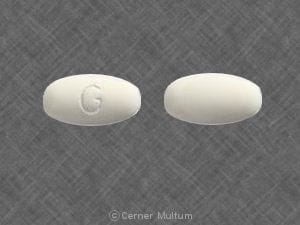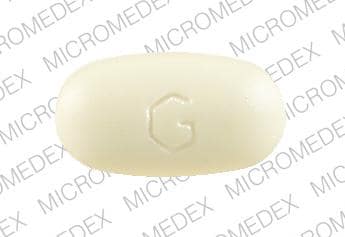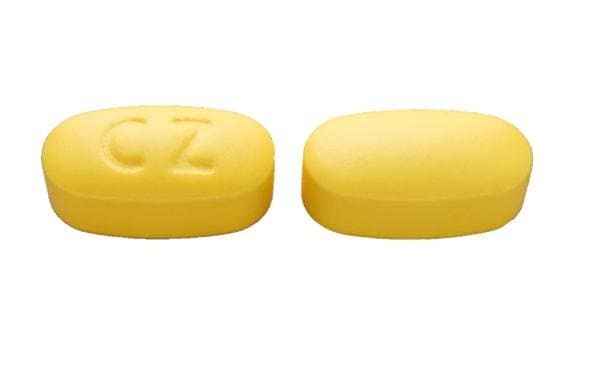Dosage Forms
Excipient information presented when available (limited, particularly for generics); consult specific product labeling.
Granules, Oral, as hydrochloride:
Colestid: 5 g/5 g scoop (300 g, 500 g) [contains aspartame; unflavored flavor]
Colestid Flavored: 5 g/7.5 g scoop (450 g) [contains aspartame; orange flavor]
Generic: 5 g/5 g scoop (500 g)
Packet, Oral, as hydrochloride:
Colestid: 5 g (30 ea, 90 ea) [unflavored flavor]
Colestid Flavored: 5 g (60 ea) [contains aspartame; orange flavor]
Generic: 5 g (30 ea, 90 ea)
Tablet, Oral, as hydrochloride:
Colestid: 1 g
Generic: 1 g
Pharmacology
Mechanism of Action
Binds with bile acids to form an insoluble complex that is eliminated in feces; it thereby increases the fecal loss of bile acid-bound low density lipoprotein cholesterol
Pharmacokinetics/Pharmacodynamics
Absorption
None
Excretion
Feces
Onset of Action
Lowering of serum cholesterol: ~1 month; LDL-C reduction: ~19%
Use: Labeled Indications
Primary hypercholesterolemia: Adjunctive therapy to diet in patients with primary hypercholesterolemia
Use: Off Label
Pruritus with primary biliary cholangitisc
Based on limited and older data for cholestyramine (which is approved for relief of pruritus associated with partial biliary obstruction), as well as clinical experience, the American Association for the Study of Liver Diseases (AASLD) recommends the use of bile acid sequestrants as first-line treatment of pruritus associated with cholestasis
Contraindications
Hypersensitivity to colestipol or any component of the formulation
Canadian labeling: Additional contraindications (not in US labeling): Complete biliary obstruction; phenylketonurics (Colestid Orange Granules only)
Dosage and Administration
Dosing: Adult
Primary hypercholesterolemia: Note: May be considered in patients with fasting triglyceride level ≤300 mg/dL who do not meet cholesterol treatment goals with dietary modification and other lipid lowering therapies (eg, maximally tolerated statin and ezetimibe) (AHA/ACC [Grundy 2018]). Oral:
Granules: Initial: 5 g once or twice daily; increase by 5 g per day at 1- to 2-month intervals. In patients with preexisting constipation, initiate at 5 g once daily for 5 to 7 days, then increase to 5 g twice daily. Maintenance: 5 to 30 g/day administered once daily or in divided doses.
Tablets: Initial: 2 g once or twice daily; increase by 2 g once or twice daily at 1- to 2-month intervals. Maintenance: 2 to 16 g/day administered once daily or in divided doses.
Pruritus with primary biliary cholangitis (off-label use): Oral: Granules: Initial: 5 g once daily; increase as needed, up to 30 g/day (Schlichting 2001).
Dosing: Geriatric
Refer to adult dosing.
Dosing: Pediatric
Dyslipidemia: Limited data available: Note: Bile acid sequestrant therapy should not be used in pediatric patients with hypertriglyceridemia. Statins are recommended as the primary agent for management of hypercholesterolemia, particularly those in high-risk categories. Multivitamin supplementation recommended due to potential folic acid and cholecalciferol malabsorption (AACE [Jellinger 2017]).
Fixed dosing: Children ≥8 years and Adolescents: Oral: Reported range: 2 to 12 g/day; in one trial, both the 10 g once daily and 5 g twice daily were shown to produce significant lowering of serum cholesterol (McCrindle 2002; Tonstad 1996); doses <10 g suggested to maximize tolerability (AACE [Jellinger 2017])
Weight-directed dosing: Children ≥3 years and Adolescents: Very limited data available: 125 to 250 mg/kg/day has been used in patients 3 to 24 years of age (mean age: 13.7 years) with familial hypercholesterolemia (Schlierf 1982). Note: Although colestipol has been used in patients down to 3 years of age, experts recommend the initiation of drug therapy for management of hypercholesterolemia in pediatric patients who are older (eg ≥10 years) (AACE [Jellinger 2017]).
Reconstitution
Granules for oral suspension: Add granules to ≥90 mL of any beverage (Note: mixing with carbonated beverages may lead to GI discomfort). Stir until completely mixed (granules will not dissolve in liquid). May also be mixed with milk in cereal or with soups, or added to pulpy fruits (eg, fruit cocktail, crushed pineapple, peaches, pears).
Administration
Other drugs should be administered at least 1 hour before or 4 hours after colestipol.
Granules: Do not administer in dry form (to avoid esophageal distress or accidental inhalation). After mixing and administration of granules, rinse glass with a small amount of liquid and ingest to ensure all medication is taken.
Tablets: Administer tablets 1 at a time, swallowed whole, with plenty of liquid. Do not cut, crush, or chew tablets.
Dietary Considerations
Some products may contain phenylalanine.
Storage
Store at 20°C to 25°C (68°F to 77°F).
Colestipol Images
Drug Interactions
Amiodarone: Bile Acid Sequestrants may decrease the bioavailability of Amiodarone. Consider therapy modification
Cardiac Glycosides: Bile Acid Sequestrants may decrease the absorption of Cardiac Glycosides. Monitor therapy
Chenodiol: Bile Acid Sequestrants may decrease the serum concentration of Chenodiol. Management: Administration of chenodiol 5 hours or more after bile acid sequestrants may reduce chenodiol adsorption in the gastrointestinal tract. Monitor for decreased therapeutic effects of chenodiol in patients receiving bile acid sequestrants. Consider therapy modification
Cholic Acid: Bile Acid Sequestrants may decrease the absorption of Cholic Acid. Management: Administer cholic acid at least 1 to 4 hours before or 4 to 6 hours after administration of any bile acid-binding products to minimize the potential for a significant interaction. Consider therapy modification
Corticosteroids (Oral): Bile Acid Sequestrants may decrease the absorption of Corticosteroids (Oral). Monitor therapy
Deferasirox: Bile Acid Sequestrants may decrease the serum concentration of Deferasirox. Management: Avoid combination when possible; if the combination must be used, consider a 50% increase in initial deferasirox dose, with monitoring of serum ferritin concentrations and clinical responses to guide further dosing. Consider therapy modification
DilTIAZem: Colestipol may decrease the absorption of DilTIAZem. Monitor therapy
Estrogen Derivatives (Contraceptive): Bile Acid Sequestrants may decrease the serum concentration of Estrogen Derivatives (Contraceptive). Management: Administer estrogen-based oral contraceptives at least 1 to 4 hours prior to or 4 to 6 hours after administration of a bile acid sequestrant. Consider therapy modification
Ezetimibe: Bile Acid Sequestrants may decrease the absorption of Ezetimibe. Management: Administer ezetimibe at least 2 hours before or 4 hours after any bile acid sequestrant. Consider therapy modification
Fibric Acid Derivatives: Bile Acid Sequestrants may decrease the absorption of Fibric Acid Derivatives. Management: Separate doses by at least 2 hours to minimize this interaction; fenofibric acid labeling recommends administration one hour prior to or 4-6 hours after a bile acid sequestrant. Consider therapy modification
Leflunomide: Bile Acid Sequestrants may decrease serum concentrations of the active metabolite(s) of Leflunomide. Management: Unless using this combination to intentionally enhance leflunomide elimination, consider an alternative to the bile acid sequestrants when possible. Separating drug administration is not likely to be effective at avoiding this interaction. Consider therapy modification
Lomitapide: Bile Acid Sequestrants may decrease the absorption of Lomitapide. Management: Administer lomitapide at least 4 hours before or after administration of a bile acid sequestrant. Consider therapy modification
Loop Diuretics: Bile Acid Sequestrants may decrease the absorption of Loop Diuretics. Consider therapy modification
Methotrexate: Bile Acid Sequestrants may decrease the absorption of Methotrexate. Monitor therapy
Methylfolate: Colestipol may decrease the serum concentration of Methylfolate. Monitor therapy
Multivitamins/Fluoride (with ADE): Bile Acid Sequestrants may decrease the serum concentration of Multivitamins/Fluoride (with ADE). Management: Avoid concomitant administration of multivitamins and bile acid sequestrants (eg, cholestyramine). Separate administration of these agents by several hours to minimize the risk of an interaction. Consider therapy modification
Multivitamins/Minerals (with ADEK, Folate, Iron): Bile Acid Sequestrants may decrease the serum concentration of Multivitamins/Minerals (with ADEK, Folate, Iron). Specifically, bile acid sequestrants may impair the absorption of fat-soluble vitamins. Management: Avoid concomitant administration of multivitamins and bile acid sequestrants (eg, cholestyramine). Separate administration of these agents by several hours to minimize the risk of an interaction. Consider therapy modification
Multivitamins/Minerals (with AE, No Iron): Bile Acid Sequestrants may decrease the serum concentration of Multivitamins/Minerals (with AE, No Iron). Management: Avoid concomitant administration of multivitamins and bile acid sequestrants (e.g., cholestyramine). Separate administration of these agents by several hours to minimize the risk of an interaction. Consider therapy modification
Mycophenolate: Bile Acid Sequestrants may decrease the serum concentration of Mycophenolate. Avoid combination
Niacin: Bile Acid Sequestrants may decrease the absorption of Niacin. Consider therapy modification
Nonsteroidal Anti-Inflammatory Agents: Bile Acid Sequestrants may decrease the absorption of Nonsteroidal Anti-Inflammatory Agents. Consider therapy modification
Obeticholic Acid: Bile Acid Sequestrants may decrease the serum concentration of Obeticholic Acid. Management: Administer obeticholic acid at least 4 hours before or at least 4 hours after the administration of bile acid sequestrants. Consider therapy modification
Pravastatin: Bile Acid Sequestrants may decrease the serum concentration of Pravastatin. Management: Administer pravastatin at least 1 hour before or 4 hours after administration of bile-acid resins (eg, cholestyramine, colestipol, colesevelam) to minimize the risk for any significant interaction. Consider therapy modification
Progestins (Contraceptive): Bile Acid Sequestrants may decrease the serum concentration of Progestins (Contraceptive). Management: Administer oral progestin-containing contraceptives at least 1 to 4 hours prior to or 4 to 6 hours after administration of a bile acid sequestrant. Consider therapy modification
Propranolol: Bile Acid Sequestrants may decrease the serum concentration of Propranolol. Monitor therapy
Raloxifene: Bile Acid Sequestrants may decrease the absorption of Raloxifene. Consider therapy modification
Teriflunomide: Bile Acid Sequestrants may decrease the serum concentration of Teriflunomide. Management: Unless using this combination to intentionally enhance teriflunomide elimination, consider an alternative to the bile acid sequestrants when possible. Separating drug administration is unlikely to be effective at avoiding the interaction. Consider therapy modification
Tetracyclines: Bile Acid Sequestrants may decrease the absorption of Tetracyclines. Exceptions: Eravacycline. Consider therapy modification
Thiazide and Thiazide-Like Diuretics: Bile Acid Sequestrants may decrease the absorption of Thiazide and Thiazide-Like Diuretics. The diuretic response is likewise decreased. Consider therapy modification
Thyroid Products: Bile Acid Sequestrants may decrease the serum concentration of Thyroid Products. Management: Administer oral thyroid products at least 4 h prior to colesevelam, and at least 1 h before or 4-6 h after cholestyramine. Specific recommendations for colestipol are not available. Monitor for decreased concentrations/effects of the thyroid product. Consider therapy modification
Ursodiol: Bile Acid Sequestrants may decrease the serum concentration of Ursodiol. Management: Administer ursodiol 2 to 4 hours before or at least 2 to 5 hours after bile acid sequestrants to minimize the potential for any significant interaction. Monitor for decreased therapeutic effects of ursodiol in patients receiving bile acid sequestrants. Consider therapy modification
Vancomycin: Bile Acid Sequestrants may diminish the therapeutic effect of Vancomycin. Management: Avoid concurrent administration of oral vancomycin and bile acid sequestrants when possible. If use of both agents is necessary, consider separating doses by at least 2 hours to minimize the significance of the interaction. Consider therapy modification
Vitamin D Analogs: Bile Acid Sequestrants may decrease the serum concentration of Vitamin D Analogs. More specifically, bile acid sequestrants may impair absorption of Vitamin D Analogs. Management: Avoid concomitant administration of vitamin D analogs and bile acid sequestrants (eg, cholestyramine). Separate administration of these agents by several hours to minimize the potential risk of interaction. Monitor plasma calcium concentrations. Exceptions: Calcipotriene; Calcitriol (Topical); Tacalcitol. Consider therapy modification
Vitamin K Antagonists (eg, warfarin): Bile Acid Sequestrants may decrease the absorption of Vitamin K Antagonists. Monitor therapy
Adverse Reactions
Frequency not defined.
Cardiovascular: Angina, chest pain, peripheral edema, tachycardia
Central nervous system: Dizziness, fatigue, headache (including migraine and sinus headache), insomnia
Dermatologic: Dermatitis, skin rash, urticaria
Gastrointestinal: Abdominal cramps, abdominal pain, anorexia, bloating, constipation, cholecystitis, cholelithiasis, diarrhea, dyspepsia, dysphagia, esophageal obstruction, flatulence, heartburn, hemorrhoidal bleeding, nausea, peptic ulcer, vomiting
Hepatic: Increased serum alkaline phosphatase, increased serum ALT, increased serum AST
Neuromuscular & skeletal: Arthralgia, arthritis, back pain, myalgia, weakness
Respiratory: Dyspnea
Warnings/Precautions
Concerns related to adverse effects:
- Acidosis: Chronic use may lead to development of hyperchloremic acidosis.
- Bleeding: Chronic use may be associated with bleeding problems due to hypoprothrombinemia from vitamin K deficiency; may be prevented with use of vitamin K therapy.
- Constipation: May produce or exacerbate constipation; fecal impaction may occur; initiate therapy at a reduced dose and increase gradually in patients with a history of constipation. Encourage increased fluid and fiber intake; a stool softener may also be indicated. Hemorrhoids may be worsened.
- Hypothyroidism: There is a theoretical risk of developing hypothyroidism, particularly in patients with limited thyroid reserve. Use with caution.
Disease-related concerns:
- Hypertriglyceridemia: Bile acid sequestrants can increase serum triglyceride concentrations. The American College of Cardiology/American Heart Association recommends avoiding use in patients with fasting triglyceride levels ≥300 mg/dL (ACC/AHA [Grundy 2018]).
Concurrent drug therapy issues:
- Drug-drug interactions: Potentially significant interactions may exist, requiring dose or frequency adjustment, additional monitoring, and/or selection of alternative therapy. Consult drug interactions database for more detailed information.
Dosage form specific issues:
- Granules: Colestipol granules should never be taken in dry form; may cause esophageal spasm and/or respiratory distress.
- Phenylalanine: Some products may contain phenylalanine.
Other warnings/precautions:
- Hyperlipidemia: Secondary causes of hyperlipidemia should be ruled out prior to therapy initiation.
- Patients susceptible to fat-soluble vitamin and folic acid deficiencies: Use with caution in patients susceptible to fat-soluble vitamin deficiencies. Absorption of fat-soluble vitamins A, D, E, and K and folic acid may be decreased; patients should take vitamins ≥4 hours before colestipol.
Monitoring Parameters
Lipid profile (fasting or nonfasting) before initiating treatment. Fasting lipid profile should be rechecked 4 to 12 weeks after starting therapy and every 3 to 12 months thereafter (AHA/ACC [Grundy 2018])
Pregnancy
Pregnancy Considerations
Lipid concentrations increase during pregnancy as required for normal fetal development. When increases are greater than expected, supervised dietary intervention should be initiated. Bile acid sequestrants are recommended when treatment is needed (Avis 2009; Jacobson 2015).
Colestipol is not absorbed systemically (<0.17%), but may interfere with maternal vitamin absorption; therefore, regular prenatal supplementation may not be adequate.
Patient Education
What is this drug used for?
- It is used to lower cholesterol.
- It may be given to you for other reasons. Talk with the doctor.
Frequently reported side effects of this drug
- Heartburn
- Abdominal cramps
- Passing gas
- Diarrhea
- Nausea
- Vomiting
Other side effects of this drug: Talk with your doctor right away if you have any of these signs of:
- Bruising
- Bleeding
- Severe abdominal pain
- Severe constipation
- Difficulty swallowing
- Signs of a significant reaction like wheezing; chest tightness; fever; itching; bad cough; blue skin color; seizures; or swelling of face, lips, tongue, or throat.
Note: This is not a comprehensive list of all side effects. Talk to your doctor if you have questions.
Consumer Information Use and Disclaimer: This information should not be used to decide whether or not to take this medicine or any other medicine. Only the healthcare provider has the knowledge and training to decide which medicines are right for a specific patient. This information does not endorse any medicine as safe, effective, or approved for treating any patient or health condition. This is only a brief summary of general information about this medicine. It does NOT include all information about the possible uses, directions, warnings, precautions, interactions, adverse effects, or risks that may apply to this medicine. This information is not specific medical advice and does not replace information you receive from the healthcare provider. You must talk with the healthcare provider for complete information about the risks and benefits of using this medicine.







